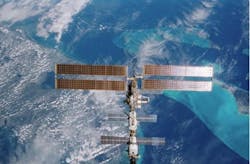Space systems, subsystems technologies benefit Earth applications, not just space-based missions
IAC 2014, TORONTO, 2 Oct. 2014. A panel of aerospace professionals from government agencies, academia, and the private sector convened in Toronto at the 65th International Astronautical Congress (IAC) today to discuss the applications of technologies and lessons learned from the International Space Station (ISS) to applications on Earth, such as robotics technologies used in life-saving surgeries, and even Low Earth Orbit (LEO).
“ISS, the largest international scientific-technical cooperation, continues to produce valuable and exciting results,” says Norbert Frischauf, space systems engineer and journalist, SIGMA-7 and moderator of today’s IAC plenary session, entitled “ISS and beyond—the future of human activity in Low Earth Orbit.”
Given the investment of public funds, especially given a challenging economy, “we need to show results, provide value” or a return on investment (ROI)—or “in orbit for Earth” as they say—recognizes William Gerstenmaier, associate administrator for human exploration and operations at NASA in Washington.
Ernst Messerschmid, a professor at Universitat Stuttgart in Germany, stressed the need “to explore, to understand, and to work together” to advance aerospace technologies, processes, and investment.
“Systems and subsystems need to be higher reliablility and lower maintenance,” admits Gerstenmaier.
“The ISS is the first step in exploration and beyond LEO,” says Hansjorg Dittus from the Institut fur Raumfahrtsysteme (ISR, the Institute for Space Systems), Stuttgart University in Germany.
“ISS is the perfect testbed,” adds Messerschmid, acknowledging valuable insights into best infrastructures and life support systems, including algae that consumes carbon dioxide and provides both oxygen and nourishment.
“The Space Launch System (SLS) could mesh with expandable habitat technologies,” says Robert Bigelow of Bigelow Aerospace in Las Vegas, Nev.
“In the short term, we need to come together and look at the possibility of a LEO space station, given limited budgets,” concludes Dittus.


